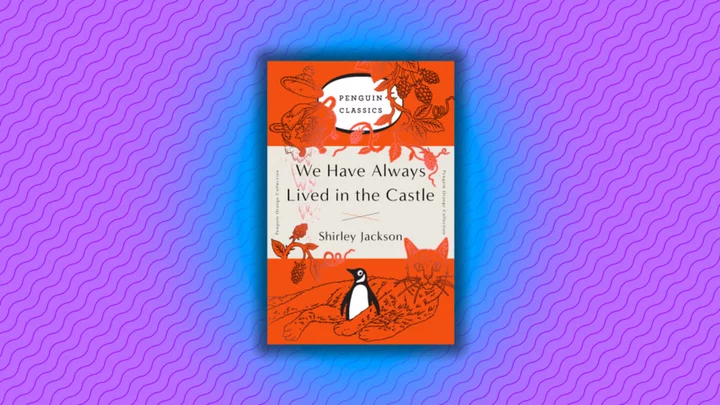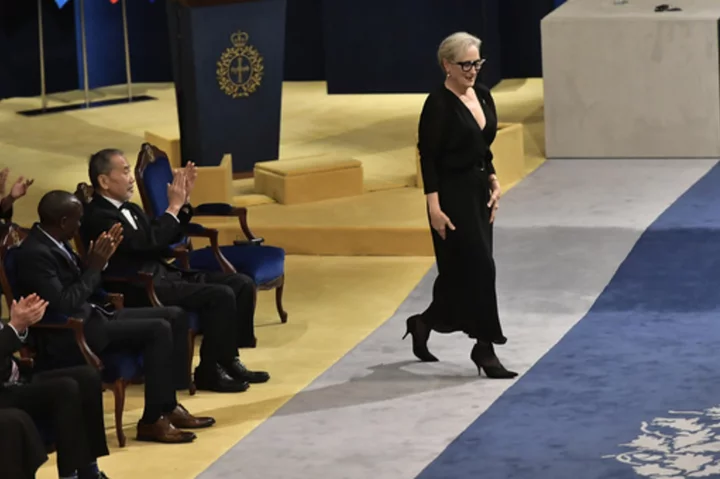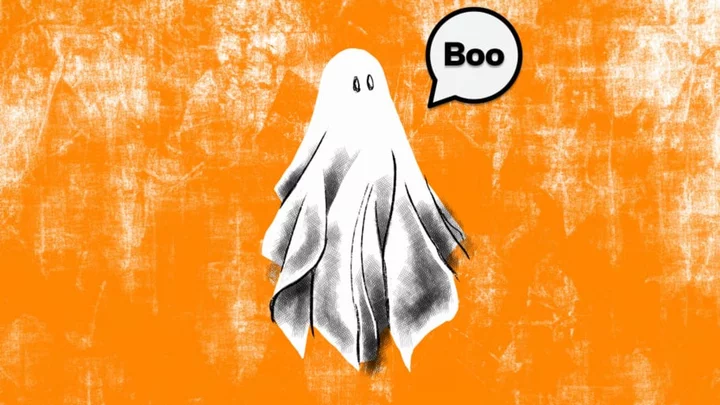NEW YORK (AP) — Something is different on the comics pages this week. In the panels of “Mutts,” there's the long-delayed sight of freedom.
Patrick McDonnell, the cartoonist who draws the popular strip, is freeing his character Guard Dog, liberating an animal who has become for decades a symbol of the cruelty of dog chaining.
“I think it just hit me that I can’t do it forever and that it has to happen,” McDonnell told The Associated Press ahead of the publication of Thursday's panel showing Earl's owner kneeling beside the dog and announcing: “We have to remove this chain.” On Friday's strip, it will be gone.
“I had a vague idea what the story was going to be, but I finally took some time and said, ‘Well, what is that story?’ And I was happy with what I came up with. So I said, ‘Now’s the time to do it.’”
"Mutts" premiered in 1995 with two heroes — the small canine Earl and the feline Mooch, fond of saying “Yesh.” There's also Woolfie, Sid the fish, Crabby, Sourpuss and Butchie, the ever-vigilant owner of the Fatty Snax Deli.
Guard Dog was added about a year after launch as McDonnell explored the idea of having an antagonist for his heroes.
“I started in my sketchbooks drawing a tough dog,” he says. “I drew a big gruff dog and I put a studded collar on him. And then I drew a chain. And when I did that, it changed everything. I realized that it wasn’t a villain. It was a tragic character.”
For years, Guard Dog sat in the unmowed grass of a neighborhood lawn or howled at the moon, alone and philosophical. In one strip he holds a piece of paper that reads “Guard Dog's To Do List" with only one item: “Remind people of man's inhumanities.”
Doozy, a neighborhood girl, regularly visits the mutt on her way to and from school, bringing something to brighten his day: an umbrella, treats, a hug, a kind word and a reminder that he isn’t alone. One frigid night, he was shivering and she brought a blanket and a kiss.
Fans of Guard Dog would regularly plead with McDonnell to free the mutt but the artist was also lobbied by animal welfare groups to keep the dog chained as a way to increase the spotlight on the issue.
“I always felt like, ’Geez, if I inspired even one family to bring the dog in the house, that it was worth doing. I know it was tough on the readers and it was tough on Guard Dog,” he said.
“You know, whenever I drew him in my sketchbooks or if I did a talk, I always drew Guard Dog free. So part of me felt like he was an actor playing a part.”
In the lead-up to Guard Dog's freedom, McDonnell crafted a multi-comic seven-week storyline in which the owner of Guard Dog moves away, leaving the dog utterly alone. The other animals and kids rally to save him.
“Mom,” says Doozy in one new strip. "They kept him on a chain and then they left him alone to suffer. I hate people." Her mother responds: “But what about those who devote their lives helping animals like Guard Dog?" Doozy, still in tears, reconsiders: “I love people.”
As of 2022, 23 states and the District of Columbia have laws on dog tethering or chaining, with variations on the length of time, the weather and what type of collar can be used, according to a study by the Michigan State University College of Law. In addition, many cities and counties have implemented their own laws that restrict or regulate tethering and chaining.
The landing page for “Mutts” has resources on adoption, on animal welfare groups and how to advance anti-chaining legislation. McDonnell was a member of the board of the Humane Society of the United States for 18 years and currently serves on the board of The Fund for Animals.
“I can’t wait to draw a happy Guard Dog,” he said. “He still has this great dog heart — loving life and loving the characters who visit him. It’ll be nice to see him in ‘Mutts’ without the chain.”
___
Mark Kennedy is at http://twitter.com/KennedyTwits









